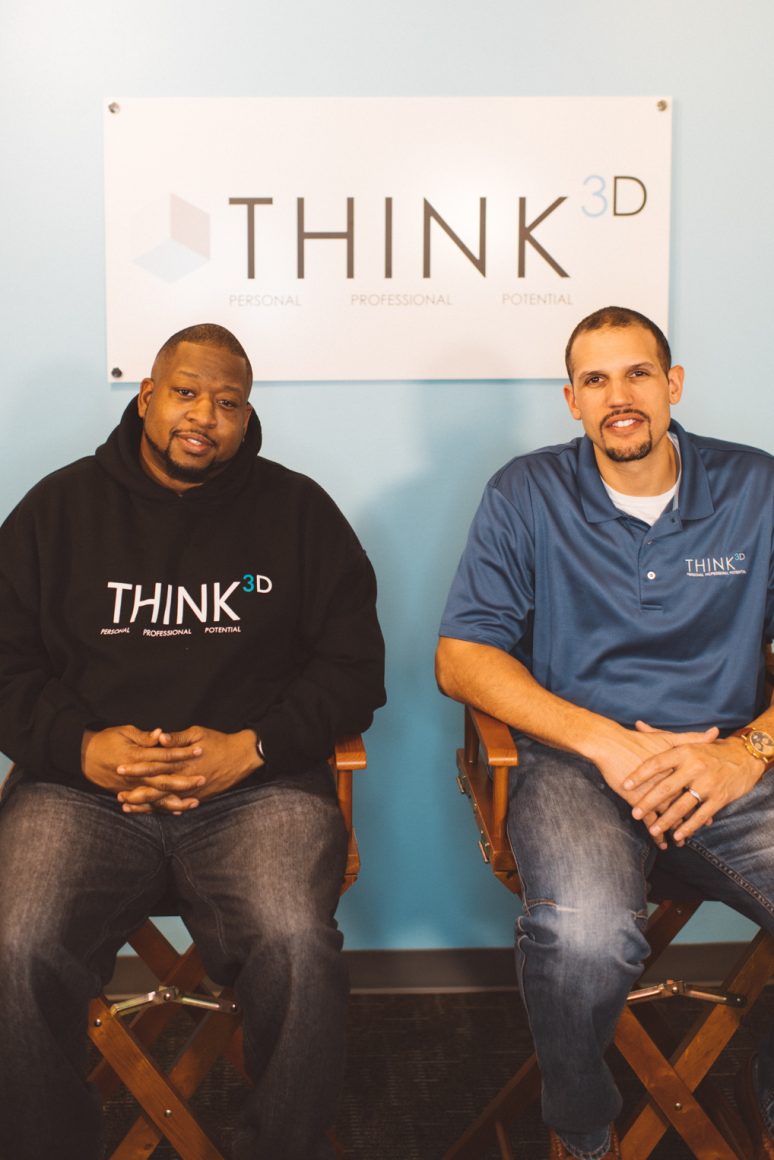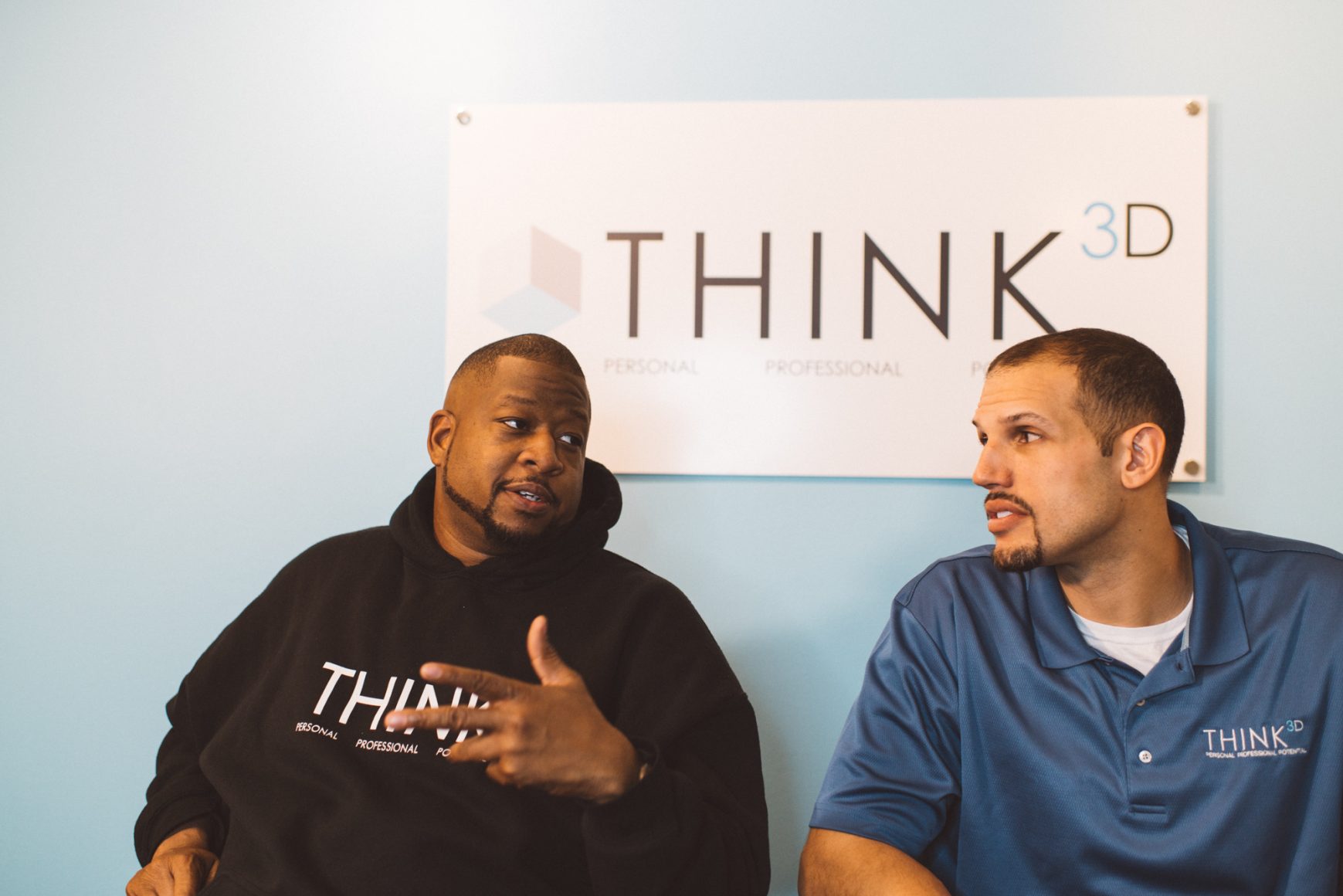There is no denying the definition of success has changed over the years, especially when it comes to the corporate world. With the uprise of technology, there has been a shift in priority within companies regarding their workspace and the people driving it. entrepreneurs Vaney Hariri and Tamien Dysart have not only acknowledged this shift, but have found a way to steer it in the direction of creating a productive workplace culture. With this realization, the duo set out to compile these formulas and topics into Think 3D solutions, which led to a book, jumpstarting their mission to reprogram companies to maximize success and productivity.

Hariri and Dysart came together from varying backgrounds of working with Fortune 500 companies, where they both witnessed firsthand how the culture of a business could directly affect an employee’s output. The two decided they could do better by hosting various talks, workshops, and creating a book, videos, and other inspiration. For example, the duo has workshops specifically on leadership, and another one on intentional happiness. These are catered to definitive traits of each workplace environment they are brought into.
“We are revolutionizing the expectation of workplace culture,” explained Dysart, continuing on about the dramatic impact Think 3D’s ideals has on businesses, from financial savings to employee capacity.
Understanding what the company needs, as far as leadership skills or better communication, allows both Dysart and Hariri to particularize their approach in bettering the working experience.
Touching on the subtitle of their book, A Radically New Approach to Maximizing the Potential of Your Team, both Hariri and Dysart talk about the importance of the constant calibration that goes into running an always-evolving business. Whether that is maintaining relationships between your employees, or reevaluating what success means in that moment, it is important to preserve a healthy and productive culture. If that calibration is left in the dust, companies run the risk of losing employee loyalty, as well as brand integrity. Not only that, but businesses that have higher turnover rates have larger spending deficits, which in turn leads to a loss of profit.

Hariri explains that in order to avoid this, “You have to think three-dimensionally. When people think about the thing or their position within the job, they are thinking inside the box. When they start thinking about the business and the problem in relation to the business, they are thinking outside the box.”
Like most dramatic changes in history, a point of interest is when and how the change occured. In this case, there has been mass speculation that this change came on the heels of the millennial generation entering the workforce. Not only are millennials asking for more than their predecessors, but those predecessors are still present in the workplace, creating a conflict of demands and desires. Dysart talks about this and dissects the relationship between both generations.
“Millennials watched their parents and grandparents come home too tired to play, so they don’t want to work 60 hours a week,” he said. “They saw companies abandon their parents, so they don’t want to work for someone who has no loyalty towards them.”
So, how do you create a culture where the demands of a newer generation correlate with the expectations of an older generation? The duo says you define a universal set of standards. You create a culture in which things are continually getting better. One thing Think 3D offers that allows individuals to work on their own culture is their “Power Thought of the Day.” When visiting their website, you have the opportunity to enter your email and receive a daily power thought. This is just one way Think 3D integrates their culture doctrine into everyday life.

“Being able to say, ‘I know today is better than three months ago, and three months from now will be better than today,’ is the definition of a productive and engaging work environment,” said Dysart.
Think 3D isn’t just about consulting with businesses to increase productivity and decrease unnecessary spending, it is about curating relationships with the people that make a company function. It is about taking the service out of a person and seeing them as a human being, and not just part of a machine.
Hariri calls this “un-training” instead of training, due to the current mindset of expecting certain things out of employees without seeing them from a unique and personal perspective.
“You can’t ask people to give you a house before you give them hammers. You’ve got to give people tools in order for them to be successful,” explained Hariri.

What you can do, he says, is ask them questions that they have yet to think about, or questions they feel are not within their reach to ask. By doing this, you allow people to think beyond themselves, their title, and their desk, creating a bigger thought bubble within the entire company.
Both Hariri and Dysart agree that what they base their business on is what will soon be the basis of all successful businesses – demanding more of themselves, more from each other, and more from their workspace.
For more information, visit letsthink3d.com.
RETAINING YOUR TALENT
REDUCING ATTRITION COSTS
(From letsthink3d.com.)
ARE YOU A GOOD MANAGER?
Studies have shown that anywhere from 50-75 percent of employees quit their managers/supervisors, not their jobs.
BE A LEADER NOT A BOSS.
Intentionally developing better leadership within your organization is an effective way to bridge this costly gap, and it can be accomplished in an environment that is sure to develop the knowledge and skills suited to your needs.
HAPPY EMPLOYEES = SUCCESSFUL COMPANIES.
With the cost of attrition so impactful to any organization, the potential benefits from employee retention are an invaluable endeavor to explore.

















